Nikon Nikkor AF-S 70-200 mm f/2.8G ED VR II
3. Build quality and image stabilization
The picture below shows the tested Nikkor placed between the Sigma 1.4/30 and the Nikkor AF-S 24-70 mm F/2.8.
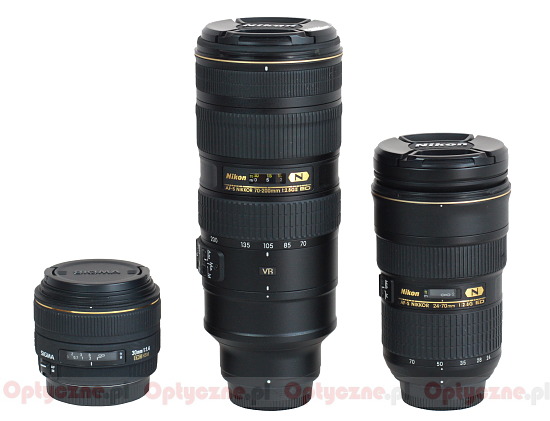 |
Please Support UsIf you enjoy our reviews and articles, and you want us to continue our work please, support our website by donating through PayPal. The funds are going to be used for paying our editorial team, renting servers, and equipping our testing studio; only that way we will be able to continue providing you interesting content for free. |
- - - - - - - - - - - - - - - - - - - - - - - - - - - - - - - - - - - - - - - - - - - - - - - -
The Nikkor AF-S 70–200 mm f/2.8G ED VR II starts with a metal bayonet mount, inside which you can find a rear element. It is hidden about 1 cm inside and it doesn’t change its position either during focusing or zooming.
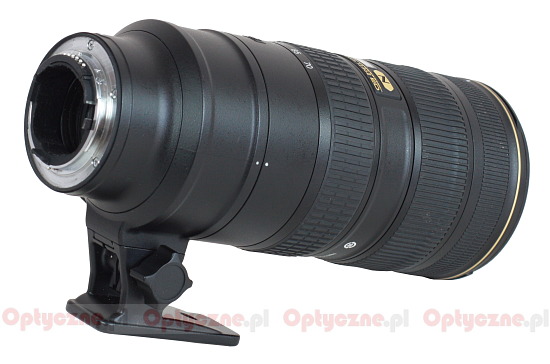 |
Already on the lens’s barrel, not far from the mount, there is a tripod adapter and then, to the left from the VR emblem, the whole series of different switches. The first of them is responsible for the focus mode change (A/M, M/A and M – the new A/M switch allows you to save the autofocus priority even if the photographer used the focus ring when taking a photo), and the second – for limiting the work range; we have two options to choose: FULL and from 5 metres to infinity. The next switch manages the stabilization (VR ON/OFF), and the following one allows us to choose its mode. There are two modes available: Normal, to take photos in typical conditions, and Active, to minimize vibrations in exceptional conditions, e.g. during driving a car, riding a motorcycle or flying a plane.
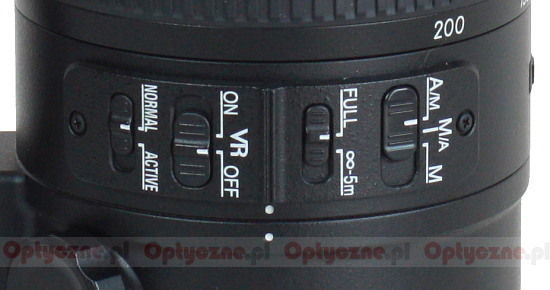 |
Behind the switches we find a zoom ring. It is about 3 cm wide, ribbed and quite loose, almost on the brink of turning it into a flaw. It works smoothly, though, and with low but even resistance in the whole range.
Further on we see the name and parameters of the lens, which surround a distance scale behind a window. The scale is clear, expressed in feet and meters but compared to the overall dimensions of the lens it seems to be a bit too small. Behind the scale there is another ring circa 3 cm wide. It is used for manual focusing and we don’t have any reservations whatsoever concerning its work. Running through the whole scale needs a140-degree turn.
Before the front element there is one more ring, ribbed and rubber-padded, which doesn’t move and its task most probably consists of ensuring a firmer grip. The front element is about 7.5 cm in diameter and surrounded by a non-rotating filter thread with a diameter of 77 mm.
When it comes to the inner construction we deal here with 21 elements in 16 groups. As many as seven elements were made of low-dispersion ED glass. Nikon implemented Nano Crystal coatings here, which are supposed to improve contrast of the photographed scenes and damp down flares. Inside there is also a circular aperture with nine diaphragm blades which can be closed down to f/22.
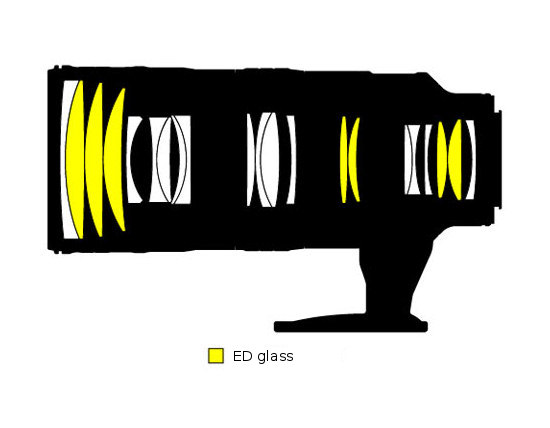 |
When the first specimens of the Nikkor AF-S 70–200 mm f/2.8G ED VR II hit the shelves it turned out that in some of them the inner rings, gripping the lens systems, had strange “splinters”- as if metal elements weren’t grinded very precisely or as if they were covered by paint in not a very thorough way. The specimen, tested by us, was free of that flaw, though.
The buyer gets included in box: both caps, a stylish, solid case, a tripod adapter and a petal-type hood, which makes an impression of small and almost filigree.
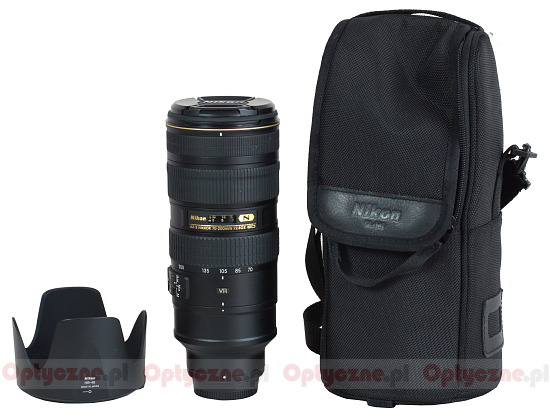 |
Stabilization
The Nikkor AF-S 70–200 mm f/2.8G ED VR II is equipped with the newest optical stabilization module which is supposed to work with the efficiency reaching 4 EV. It’s 1EV more than offered by this lens’s predecessor, launched in 2003. Of course we decided to check whether the producer’s declarations are true in reality. To do so we set the lens at 200 mm and for every exposure time in the range from 1/250 to 1/5 second we took several dozen photos, with the stabilization turned off and on. The graph below shows the percentage of fuzzy photos depending on the exposure time (it was expressed in exposure values and the zero point is the equivalent of the time of 1/200 of a second ).
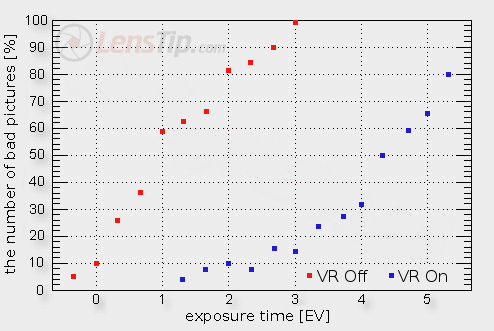
As you see, the maximum distance between the two curves, which is the measure of the stabilization efficiency, reaches 3.7 EV. Taking into account measurement errors we can say that there is no significant discrepancy between the specifications and our result – Nikon should be praised for implementing a very efficient VR II mechanism.






